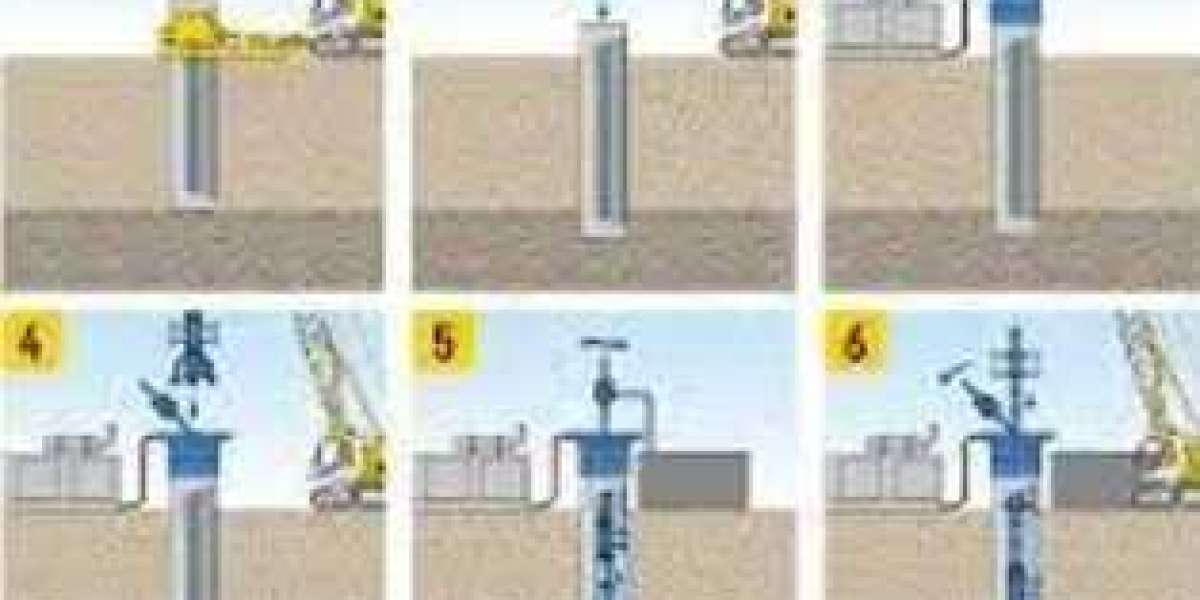Welcome to the fascinating world of reverse circulation drilling! If you're curious about this innovative drilling technology and want to learn more, you've come to the right place. In this blog post, we’ll dive into the key aspects of controlling borehole diameter and depth on a reverse circulation (RC) drill rig.
Whether you are an experienced driller or just starting out, knowing how to control these parameters is critical to a successful, efficient operation.
We will shed light on the complexities of controlling hole diameter and depth with an RC drill. From exploring the various factors that influence these parameters to uncovering techniques for precise control.
Importance of Controlling Drilling Diameter and Depth
When it comes to reverse circulation (RC) drilling, controlling the drilling diameter and depth is crucial for a successful operation. Why? Well, let me tell you.
First and foremost, maintaining control over the drilling diameter ensures that you are able to achieve accurate sample recovery. By controlling the size of the hole, you can ensure that all drilling cuttings are properly captured and brought to the surface. This allows for a thorough analysis of the geological formations being drilled through.
In addition to accurate sample recovery, controlling drilling diameter also helps in minimizing deviation. If there is excessive deviation from the desired path, it can result in inaccurate data interpretation and potential issues during subsequent mining or exploration activities.
Furthermore, managing drilling depth plays a vital role in determining how deep one can penetrate into the ground. This is essential as different mineral deposits may be located at varying depths within an area. By effectively controlling depth, drillers can target specific zones where valuable resources might be present.
Controlling both diameter and depth not only ensures precise sampling but also optimizes resource utilization by reducing unnecessary penetration beyond target depths. It saves time by eliminating costly re-drilling attempts due to inadequate control over these parameters.
Maintaining control over drilling diameter and depth enhances efficiency in RC operations while providing reliable data for decision-making processes related to mining or exploration projects.

Factors Affecting Drilling Diameter and Depth in RC Drilling
When it comes to reverse circulation (RC) drilling, achieving the desired drilling diameter and depth is crucial for successful mineral exploration and extraction. However, there are several factors that can impact these parameters.
One of the main factors affecting drilling diameter is the type of rock formation being drilled. Different types of rocks have varying levels of hardness, which can determine how easily the drill bit can penetrate through them. Harder rocks may require a more powerful rig or specialized drill bits to achieve the desired diameter.
The composition and density of the rock also play a role in controlling drilling depth. Some formations may contain layers with different densities, making it challenging to maintain consistent depth throughout the entire borehole. Additionally, geological features such as faults or fractures can affect drilling depth by causing deviations from the planned trajectory.
Another factor influencing both diameter and depth is the choice of drilling fluid or mud used during RC drilling operations. The properties of this fluid, including viscosity and density, directly impact how effectively cuttings are transported out of the borehole. Proper selection and management of drilling fluids are essential for maintaining control over these parameters.
Furthermore, operational factors like drill string weight and rotation speed can significantly influence both diameter and depth during RC drilling. Adjustments in these variables need to be made based on real-time feedback from downhole data sensors to ensure accurate control over hole dimensions.
Numerous factors come into play when trying to control both diameter and depth in reverse circulation (RC) drilling operations. From rock type to fluid properties to operational adjustments – all aspects must be carefully considered for optimal results.
Techniques for Controlling Drilling Diameter and Depth
When it comes to reverse circulation drilling, controlling the drilling diameter and depth is crucial. With the right techniques, you can ensure accurate results and maximize productivity. Here are some effective techniques for achieving control in your drilling operations.
Selecting the appropriate drill bit size is essential. The choice of drill bit will depend on factors such as desired hole diameter and formation hardness. Using a larger or smaller bit than necessary can lead to inaccurate hole sizes and increased wear on equipment.
Maintaining proper weight on bit (WOB) is vital for controlling drilling depth. By adjusting the weight applied to the drill string, you can optimize penetration rates while avoiding over-penetration or insufficient penetration into the target formation.
Another technique involves monitoring rotation speed. Adjusting the rotational speed of the drill string helps control both diameter and depth by influencing cutting action. Higher speeds may be required in softer formations to prevent clogging, while slower speeds are suitable for harder formations that require more forceful cutting.
Additionally, using stabilizers during drilling can enhance control over both diameter and depth. Stabilizers help maintain verticality by reducing deviation caused by external forces acting on the drill string.
Real-time data acquisition systems play a vital role in controlling drilling parameters accurately. These systems provide valuable insights into various parameters like RPM (revolutions per minute), WOB, torque exerted on bits etc., enabling operators to make informed decisions regarding adjustments needed.
By employing these techniques effectively, you'll have better control over your reverse circulation drilling operations' diameter and depth—leading to improved accuracy and overall project success.

Common Challenges in Controlling Drilling Diameter and Depth
Controlling drilling diameter and depth in reverse circulation drilling rigs comes with its fair share of challenges. One common challenge is the presence of unstable formations. When drilling through these types of formations, it can be difficult to maintain a consistent diameter and depth due to the constant shifting and collapsing of the surrounding geology.
Another challenge is encountered when encountering unexpected hard or soft zones within the formation. Hard zones may cause the drill bit to wear down quickly, leading to an increase in diameter. On the other hand, soft zones may result in excessive penetration, causing a decrease in diameter.
Equipment malfunctions can also pose a challenge in maintaining drilling diameter and depth control. Issues such as worn out drill bits or malfunctioning pressure gauges can lead to inaccurate measurements and deviations from desired specifications.
Environmental factors like strong winds or uneven ground conditions can make it challenging for operators to keep the drill stable during operation. This instability can result in variations in both drilling diameter and depth.
Human error is another factor that contributes to challenges in controlling drilling parameters. Inexperienced operators may struggle with accurately adjusting equipment settings or lack knowledge on how different geological features affect drilling performance.
While there are common challenges faced when trying to control drilling diameter and depth, experienced operators who are well-versed with their equipment's capabilities and have a good understanding of geological conditions will be better equipped at overcoming these obstacles efficiently. Regular maintenance and equipment checks can also help prevent malfunctions that may affect drilling performance.

Conclusion
Mastering the art of controlling drilling diameter and depth in reverse circulation drilling rigs is crucial for achieving successful and efficient drilling operations. By understanding the importance of these factors, as well as the various techniques and challenges involved, drillers can optimize their processes and ensure accurate results.
Wuxi Jinfan Drilling Equipment Co., Ltd is a leading manufacturer and supplier of reverse circulation drilling. With a professional and dedicated team, the company is committed to delivering top-notch products that meet industry standards. Their reverse circulation drilling lineup includes Anchoring Drilling Rigs, Water Well Drilling Rigs, Sea Geological Exploration Core Drilling Rigs, Surface Hydraulic Core Drilling Rigs, and Underground Core Drilling Rigs.
If you are in need of a reliable drilling solution that prioritizes efficiency and accuracy, consider investing in a conventional reverse circulation drilling tool from Wuxi Jinfan Drilling Equipment Co., Ltd.
Email:saler@wuxishuangfan.com








